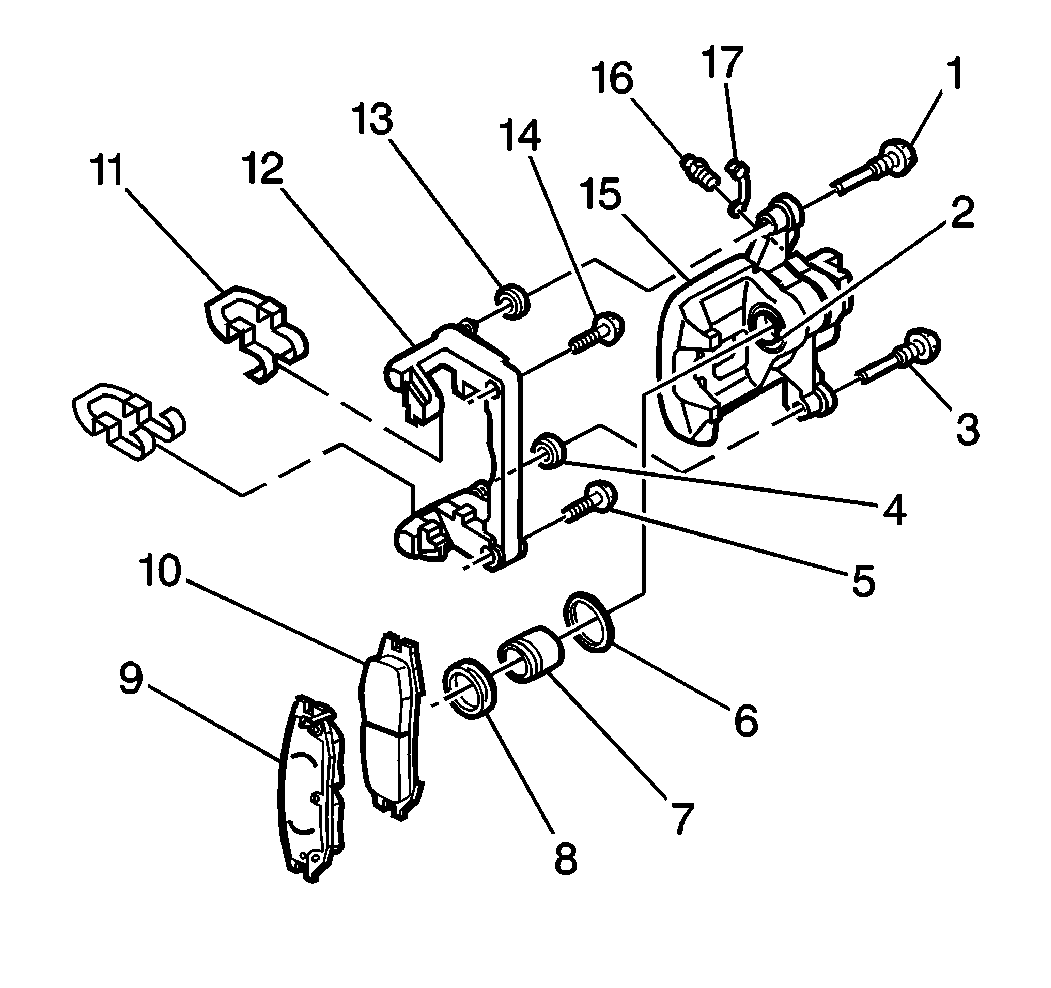
- Install the caliper (2)
to the caliper bracket (12). Ensure that the bushings are properly
in place.
- Lubricate the caliper bolts (1, 3) with silicone grease.
Do not lubricate the threads.
- Lubricate the 2 rubber boots (4, 13) in the caliper
bracket (12) with silicone grease.
Notice: Use the correct fastener in the correct location. Replacement fasteners
must be the correct part number for that application. Fasteners requiring
replacement or fasteners requiring the use of thread locking compound or sealant
are identified in the service procedure. Do not use paints, lubricants, or
corrosion inhibitors on fasteners or fastener joint surfaces unless specified.
These coatings affect fastener torque and joint clamping force and may damage
the fastener. Use the correct tightening sequence and specifications when
installing fasteners in order to avoid damage to parts and systems.
- Install the caliper
bolts (1, 3). Ensure that the boot is securely in the groove of the
caliper bolt.
Tighten
Tighten the caliper bolts (1, 3) to 110 N·m(81 lb ft).

Important: Replace the copper gaskets (3).
- Install the brake hose bolt (1).
Tighten
Tighten the brake hose bolt to 50 N·m(37 lb ft).
- Remove the wheel nuts securing the rotor to the hub.
- Install the tire and wheel assembly. Refer to
Tire and Wheel Removal and Installation
in Tires and Wheels.
Align the index marks on the wheel and the hub.
- Lower the vehicle.
- Fill the master cylinder to the proper level with clean brake
fluid. Refer to
Master Cylinder Reservoir Filling
in Hydraulic Brakes.
- Bleed the entire brake system. Refer to
Hydraulic Brake System Bleeding
in Hydraulic Brakes.
- Apply approximately 778 N (175 lb) of force to the
brake pedal 3 times in order to seat the pads against the rotor.
- Inspect the hydraulic brake system for brake fluid leaks. Refer
to
Brake Fluid Leak
in Hydraulic
Brakes.





